[Jimbaux knows that denial isn’t the way to forgiveness.]
Running Extra
Whew! You’re not the only one relieved that we’ve gotten that “NOGC Terrorism” stuff largely behind us! I’ll have bits and pieces more to say about it in the future, especially as some new fascinating nuggets of truth have just hit my inbox in response to the follow-up article, but I don’t foresee that it will ever be the primary topic of any post here on Jimbaux’s Journal. I really need to crank these nearly two month old photos out of the backlog; so, here I go!
These pictures were taken on Friday 21 October (one week to the day after NOGC Terrorism) in Lafourche and Terrebonne Parishes, and I’ll explain why I was out there, which will explain the above subtitle.
Sick Is As Sick Does
In late October, as I often do in late October, I succumbed to some illness, and I laid off sick. Since it was Friday, I just decided to flat out escape Whoadieville to Bayouland and just be on the farm. I slept late that morning, trying to get some rest, and I awoke and ate and medicated. By late morning, I was not only feeling good enough to get out, but I also felt like a little time outside might do me some good, and that’s what I did.
You Know It!
I really wanted to find, not surprisingly, the Chip Local (the Union Pacific Railway’s Avondale-to-Morgan-City local, the LLS51), and I went to Schriever to catch the westbound Sunset Limited hoping that Chip would be right behind him. Imagine my curtailed delight when I arrived on the scene and laid eyes on this.
Well, if it isn’t Chip! That’s really cool (even though the picture isn’t cool), but there’s just one problem. Just like with our NOGC Terrorism train, there really isn’t a train here. I don’t care for light power, which is why I wrote about my “curtailed delight” upon seeing this. Even a mere one empty flactar behind the locomotive would have made this immensely cooler for me.
I quickly learned that Chip was not only there to meet the westbound Sunset Limited, but the eastbound as well, as both Sunset Limited trains would meet at Schriever today. It’s Friday, and both trains run on the Lafayette Sub on this day. (The Sunset Limited is a three-day-per-week train in each direction.)
Here came the eastbound.
Then, after its station stop, we see it preparing to pass Chip! Do you see Chip standing in the distance at the crossover switches?
Not only is Chip throwing the switches and on the scene in the picture, but so is Engineer Ken on the day before his birthday! Look at him at the other crossover switch!
Unfortunately, these may be the last pictures you ever see of Engineer Ken here on Jimbaux’s Journal. He was bumped from the job by Engineer Boudreaux, an appropriately-named former colleague of Chip from their SP days. I actually had been wondering what a guy as young-looking as Ken was doing on this job.
Maybe from these pictures you can tell how terrible of a day it was for heat distortion. Our weather had finally gotten cooler that week, and it was sunny that day, ripe conditions for that ever-vexing heat distortion that I, a telephoto shooter, truly hate.
Now that the eastbound has passed, it’s time for Chip and Ken to realign both switches back to normal position, and the westbound Sunset Limited will soon be coming on the mainline.
From the below picture, you can get a hint of how utterly terrible the heat distortion was. I wanted to use some more distant shots for this post, but heat distortion killed that.
Below, Chip looks to the east to check on both trains as he talks to them on the radio. Isn’t it neat to think that here in late 2011 we’re looking at a man who went to work for the SP back when the SP was still running passenger trains? Wow!
Now, with the switches lined back for regular movement, Chip slowly creeps westward on the siding as he waits for the westbound Sunset Limited to stop at the depot and then depart town.
Do you see the passenger waiting at the depot? Do you see the stored LPG tank cars?
Did I Mention That I Hate Heat Distortion?
I show you the below picture for educational purposes only. It’s not meant for entertainment or art for art’s sake. Here, we see how terrible heat distortion can be, and, worse, it most often occurs at the time of year that offers not only the best lighting for photography, but also the most pleasant conditions to be outdoors. Here’s the #1 blasting by Chip at the west siding switch at Schriever.
Isn’t that disgusting? I truly think so, and what is so sad is that I know nothing within the law of physics that can prevent it. Unless we can use something other than visible light but then convert it to visible light in processing, I don’t think that there’s anything that could possibly ever be done in camera technology to remedy this bane of telephoto photography.
Here’s a closer shot that doesn’t show as much distortion.
Now, here was my chance to shoot Chip crawling out of the siding at restricted speed since he was on the #1’s markers.
Now what? I can’t stand light power, and even once he grabs some cars west of here, there won’t be much in the way of shots this time of day, but I haven’t done my Chacahoula shot of Chip in a long time! With him moving at restricted speed, I can easily make it there without violating the law. Here’s the result:
Do you notice that I’m standing on the ground in the above picture and not on top of my truck as I am in almost every other picture from this place? Remember, I was sick, and I decided it would be best to not do any climbing today. As a matter of fact, I knew that right after I took this picture, I had had enough sunlight and enough standing up and needed to go lie down more, medicate, hydrate, and be in darkness. So, we begin our intermission, but not without a question for some of our readers.
Acceleration Limit?
See, just as Chip gets around that curve in the above picture at Chacahoula, he can see the signal light, which apparently was green, because as soon as he got through the curve, the UP 360 started to really accelerate. Normally, trains accelerate quite slowly because of weight and length, but this isn’t even a train. (Yes, I know that according to operating rules, GCOR, it’s actually a train, but work with me here, okay?) It’s a lone locomotive, and with no train behind it, seeing it accelerate as it did was a sight to see, as rarely does one see such acceleration on a railroad.
That leads me to a question that I have for the physicists and mechanical engineers in the crowd. We have “speed limit”s on our highways for our automobiles and tucks, and I’m usually not one for more rules and more big government, especially as I have written recently, but shouldn’t we also have acceleration limits? Isn’t high acceleration (and deceleration) a bigger problem than speed (velocity, to use the proper physics term) itself?
As I see it, the people who are the biggest jerks on the highway are not the people who engage in high velocity. The biggest jerks and idiots on the highway are those who rapidly accelerate and decelerate.
Driving down the Huey P. Long Bridge, I put my truck in either third or second gear and just coast downward. Why? I see a sea of red lights at the bottom anyway. So, what’s the point in hurrying to that? It’s foolish because it’s both dangerous and it wastes fuel, since I won’t get through the intersection any faster by speeding down the bridge, yet I still have jerks passing me, accelerating down a grade when they’ll soon have to rapidly decelerate to make the stop ahead. Isn’t that foolish? Minus the grades, the same is true on Airline Highway or Highway 90 between the traffic lights that you already know are red.
I’m not a railroader, but I have driven trains once before as I spent an entire day working with a crew on a shortline I won’t name. That experience made me a better, safer driver of an automobile, because it forced me to think of so many moves in advance of what I was doing as I had the throttle stick in my hand. Trains can’t remotely accelerate and decelerate like automobiles can, meaning that engineers really have to plan several moves in advance, even stuff that they can’t yet see with their own eyes. However, just because automobiles can accelerate and decelerate quickly, that doesn’t mean that they always should.
So . . . . acceleration limit? Thoughts?
Intermission And Afternoon Assignment
Like I said, after the Chacahoula shot, it was time for me to head back to the farm for some more rest and hydration and lack of sunlight, but I had another reason to blow off Chip at this point. At some point in all of this, I heard the Louisiana & Delta Railway’s LDRR 1504 get a track warrant eastbound from Raceland. That’s noteworthy for a few reasons. First, it’s quite late in the day for him to be going east from Raceland, meaning that it’ll be much later by the time he returns westbound from Monsanto. That means that the lighting at the Kraemer Road shot will be sweet by the time he comes back there westbound. Second, the LDRR 1504 is one of the aging CF7s that likely won’t be on the railroad for much longer. It’s important to take the chances to shoot these aging “ugly ducklings” while they’re still running.
But, first, it’s time to go to sleep.
Ending The Day At Kraemer Road
Rested and hydrated, hours later, I made it to Kraemer Road east of Raceland hoping to catch the L&D job returning westbound. First, though, the railroad had to run this westbound BNSF manifest train, the M-CSXLAL-21 coming from CSX’s Gentilly Yard to BNSF’s ex-SP yard at Lafayette, Louisiana, which should explain the train symbol even to some of you train-number whiners.
This Photo Contains Artificial Flavoring And Seasoning
I’m not sure if I did a good job here, but here’s the M-CSXLAL at Kraemer Road
I have absolutely no idea at what milepost this was taken.
Here’s Why I Came Out Here
I present to you two similar images of the L&D’s Schriever job (which was on the heels of the M-CSXLAL) behind CF7 1504 over the sugarcane fields east of Raceland, the second picture being better than the first. Here’s the first, and, again, you’ll notice that I’m not on top of my truck for any of these pictures.
It’s quite appropriate to see an L&D CF7 over a sugarcane field, though not so much on the mainline, as these were L&D’s early power fleet aside from one or two GP9s and one or two SWs, but the L&D started as a way to serve the Southern Pacific Railway branchlines, many of which have since been abandoned, and L&D’s major purpose is evolving into doing mainline local work.
So, yes, there is plenty of meaning in the above picture for Jimbaux, who grew up along the sugarcane field branchlines, and the above picture turned out about as good as it could possibly have turned out.
Here’s a parting shot, just for S’s and G’s.
Do you like glint shots?
Four Railroads
So, in this post of pictures of five trains so far (two of which were Amtrak’s counterpart trains), you’ve seen four railroad companies operating on one mainline, a rarity indeed, and one of many reasons why The Cajun Porkchop and I love the ex-SP Lafayette Subdivision so much.
Now that I’ve gotten what I’ve come here to get, it’s time to call it a day and head back to the farm for more medicine, more darkness, and more rest . . . . or is it?
Encore!
As it eventuated – and as I had hoped – Chip, now with an actual train, was to meet at Raceland (a mile to the west) the two westbound trains that you just saw above. I need to get some sleep and some medicine and hydration, but Chip will be here shortly, and I’ll be damned if I’ll miss this!
Here he is, with about 20 loads of carbon black and a few empty pipe gondolas.
How’s that? Not bad for a day of sickness and sneezing and coughing, eh? I think that I was not only soon asleep after this, but I slept for about 12 hours that night.
This Is Why I Believe In Jimbaux’s Journal
As I mentioned in my last post, a big part of the theme of my work is a rejection of the culture of consumption of things that are designed for consumption that is so terribly prevalent in our country today. A few people have written to me privately to confirm that, yes, if you (like I) find your main source of pleasure and entertainment in things that are not designed to grab your attention, things that are behind-the-scenes, things that are outside the paradigm of the corporate-driven, commercialized, consumer society – things that you are told that you’re supposed to find interesting – you are judged, and you may even be told that it’s stupid, wrong, or even illegal.
Rather, I already know (from what some of you have told me) that some of you here tune in to this site just to see stuff like the Chip Local, not because my photographs of it are any good, but because they’re the only coverage of this train of character – and the men behind it – that you’re ever going to get. Again, I pride myself on conveying the beauty of things that you’d otherwise ignore, reporting what would otherwise go unreported, meaning that you’d never even know about this train or the character that it has if I didn’t photograph it, and this gets us back to the dynamic of knowing where our food – and, by extension, our energy – originates and how it gets to us. What a beautiful and fascinating world it is. Think about that the next time you have to wait five minutes for a train to pass you.
All for now . . .
Jimbaux
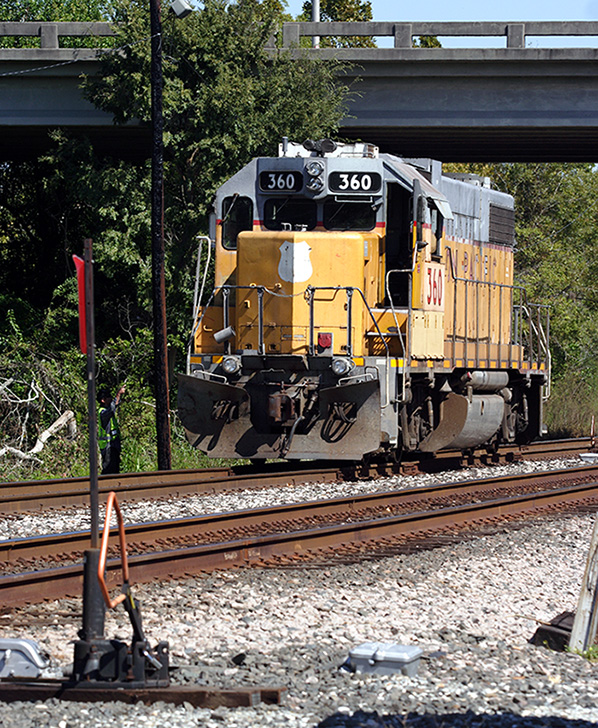
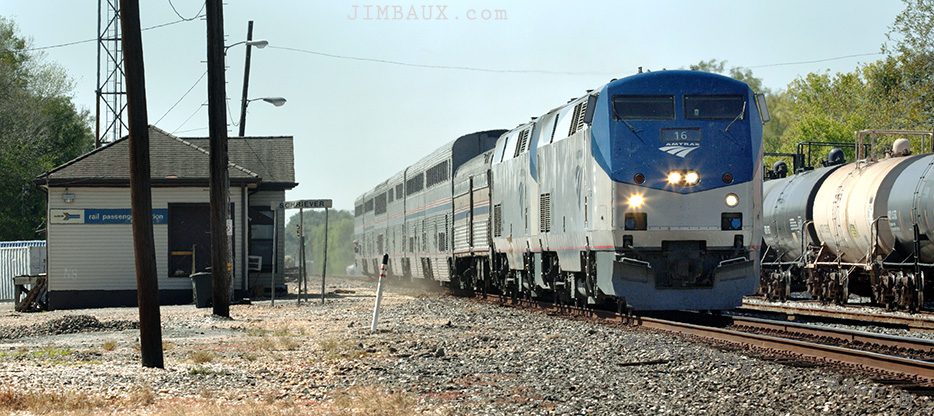

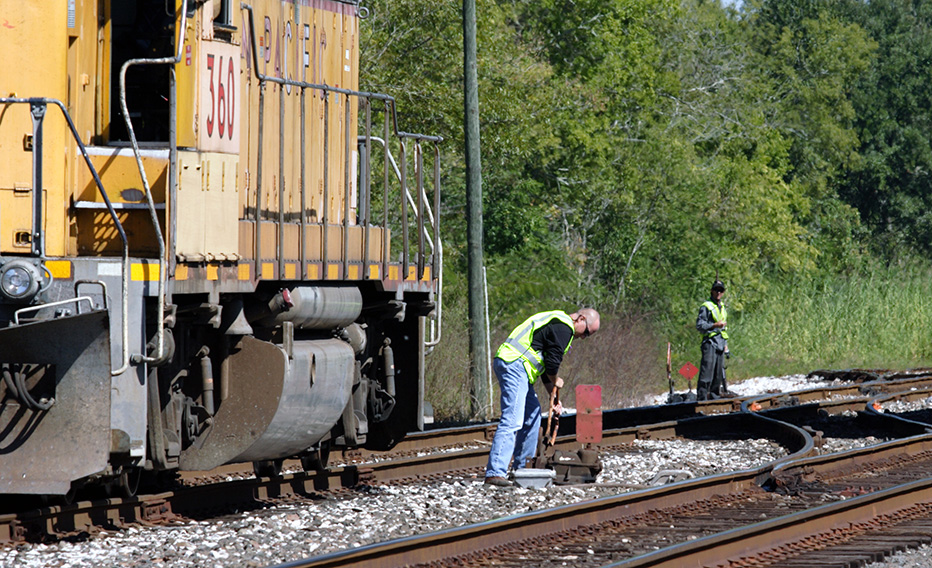
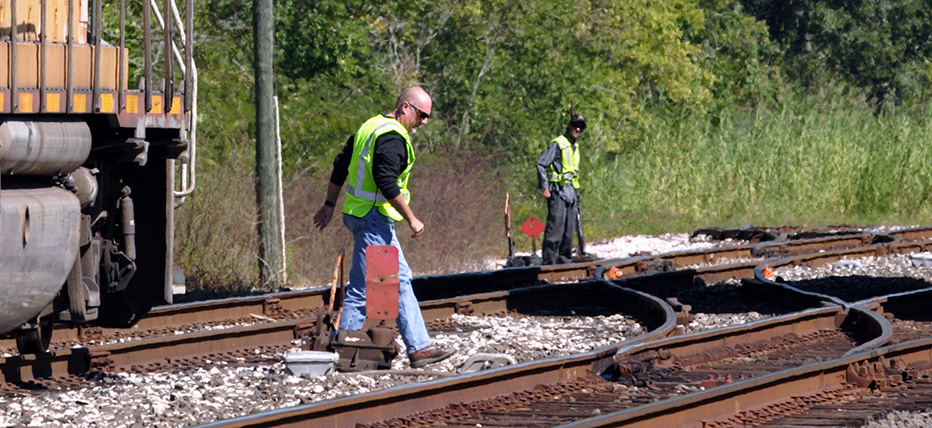
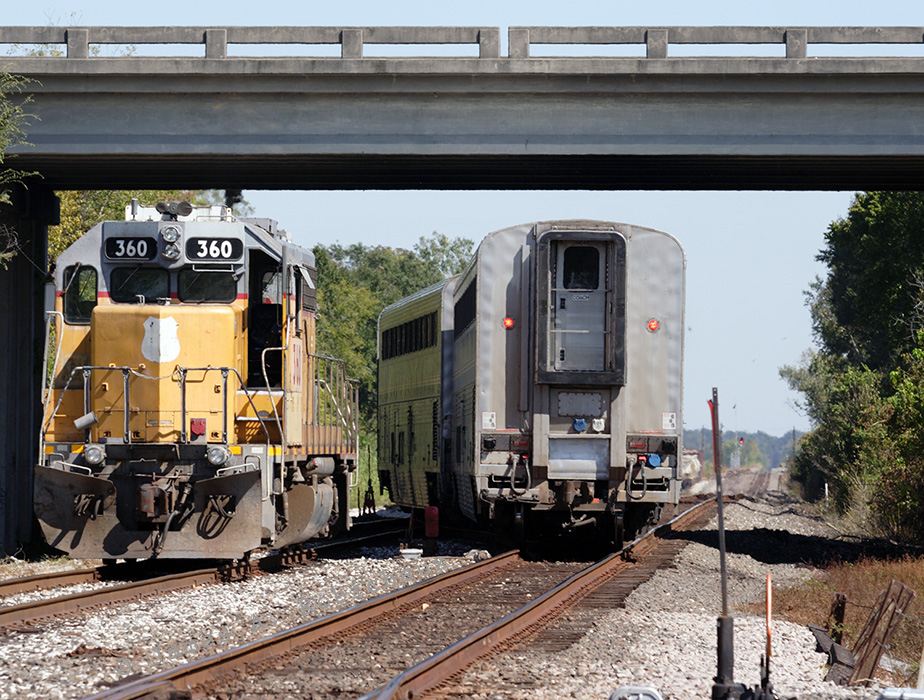
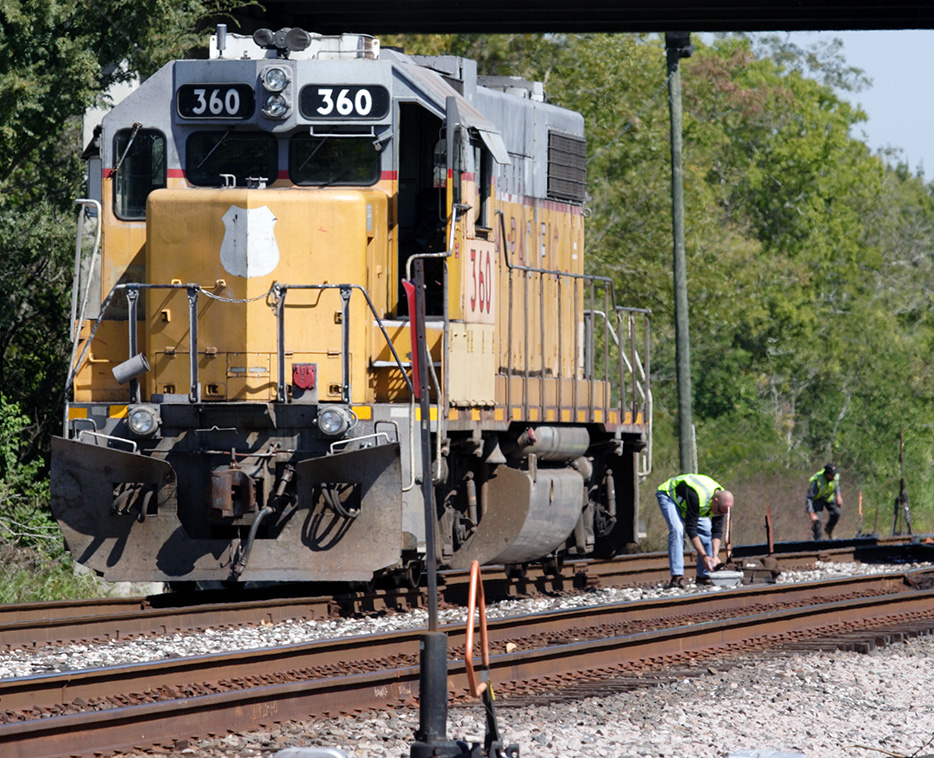
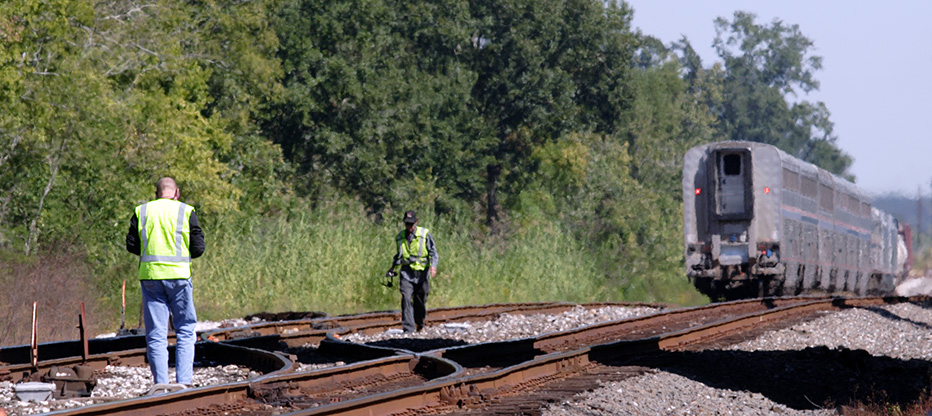
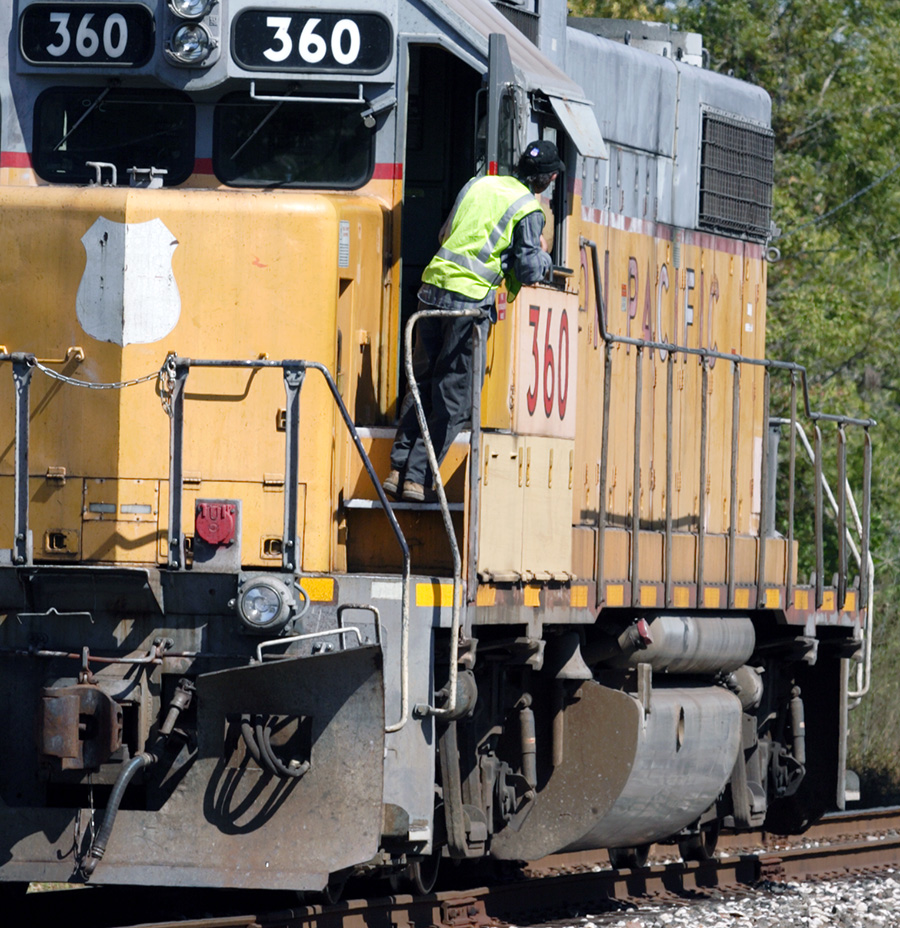
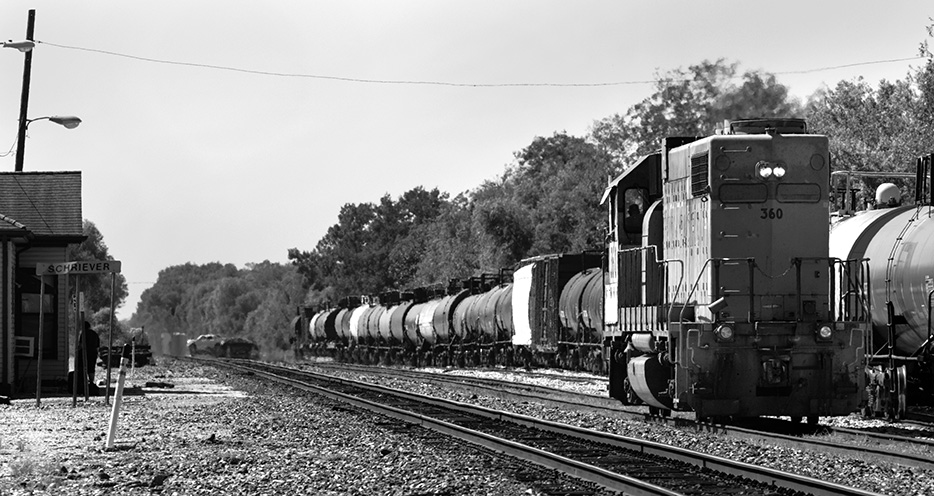
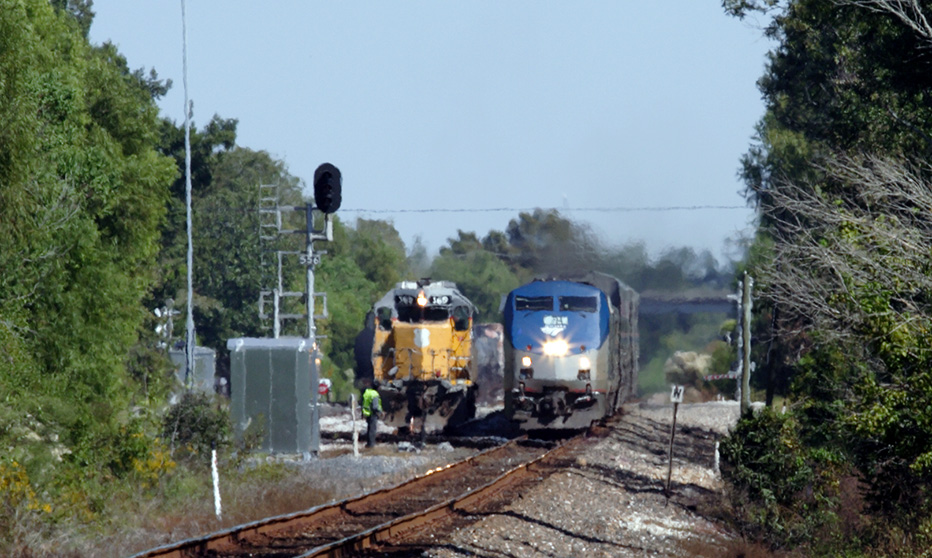

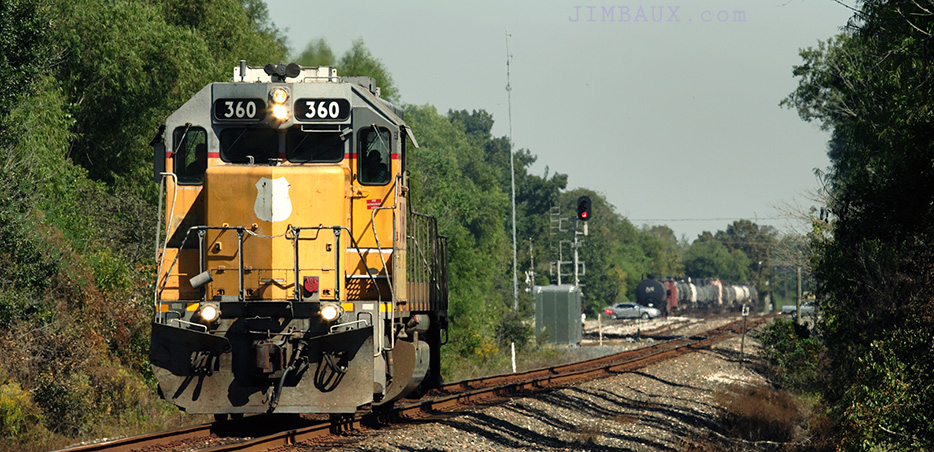
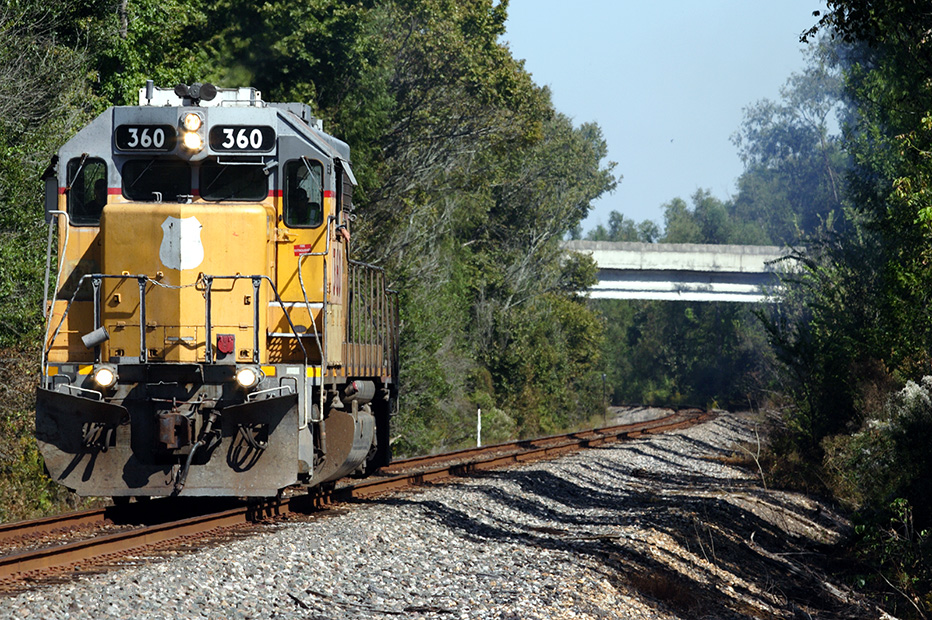
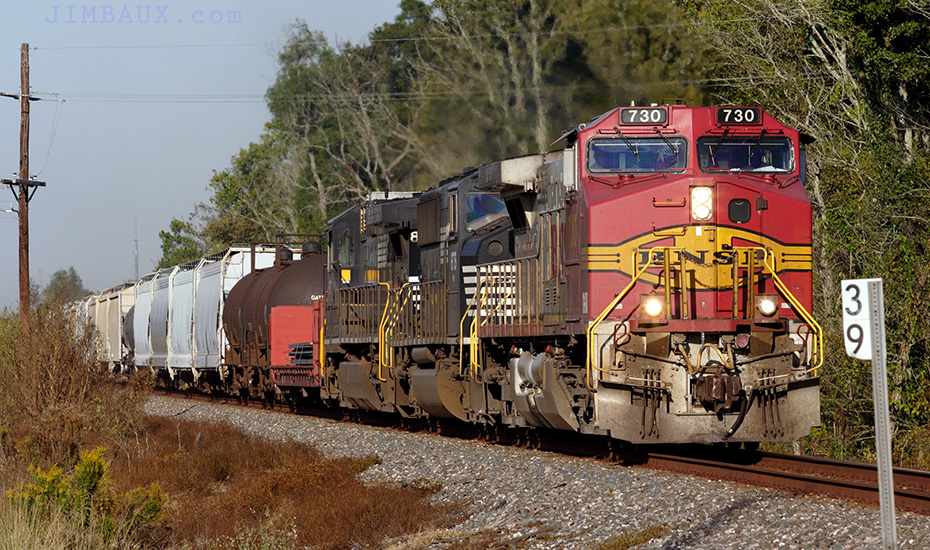
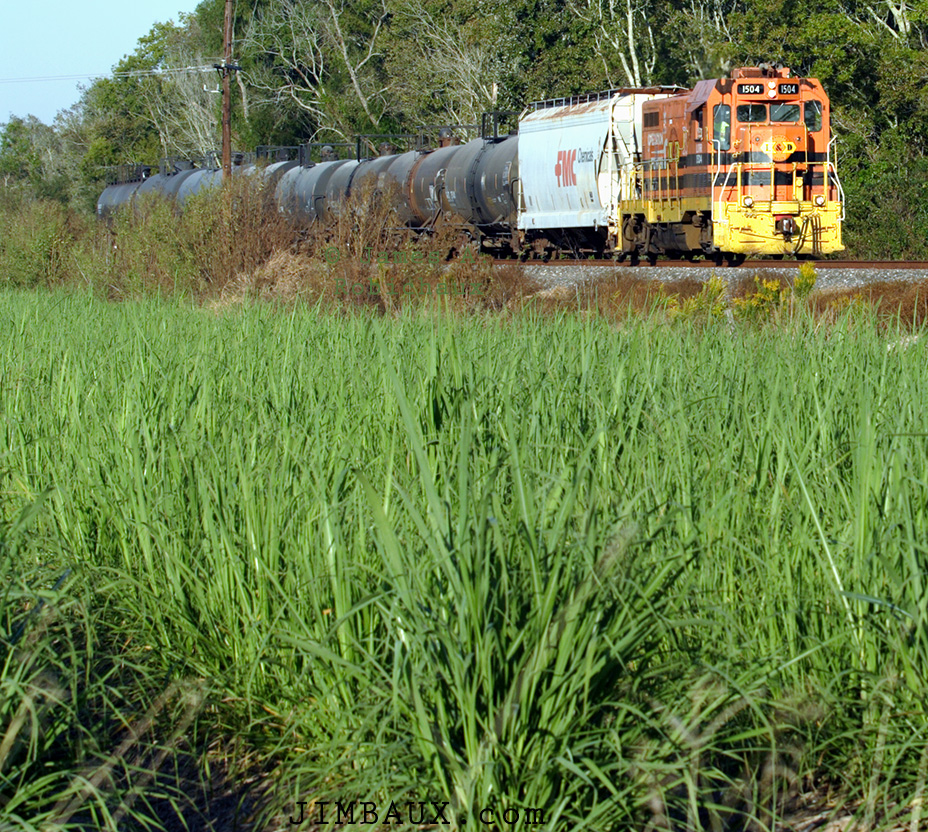
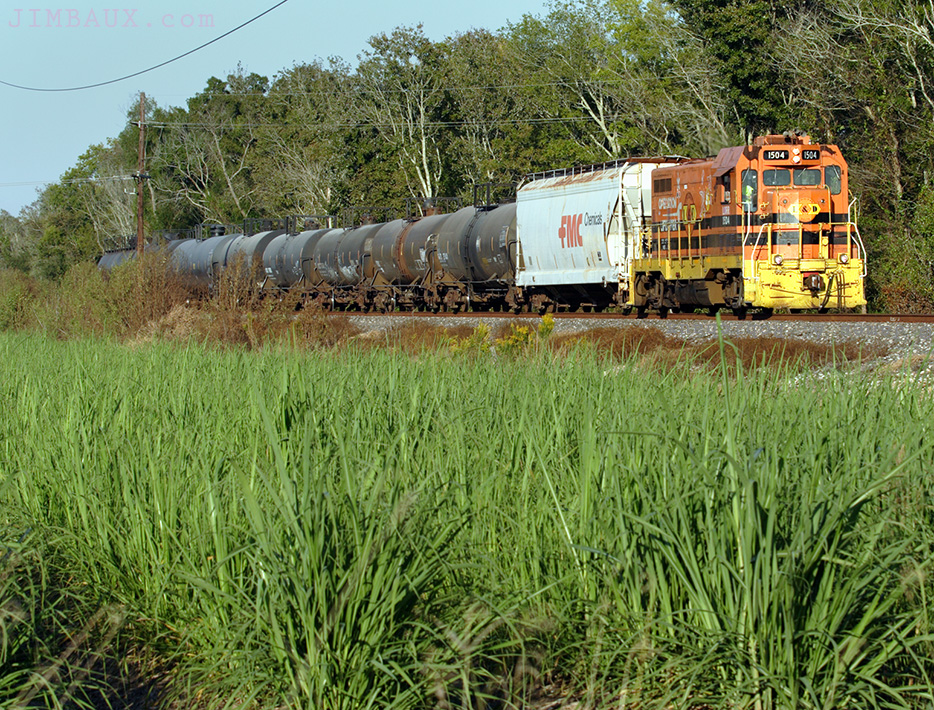
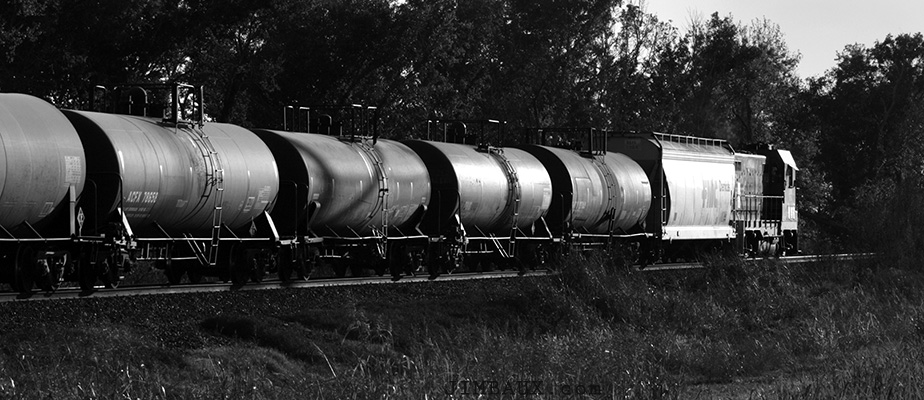
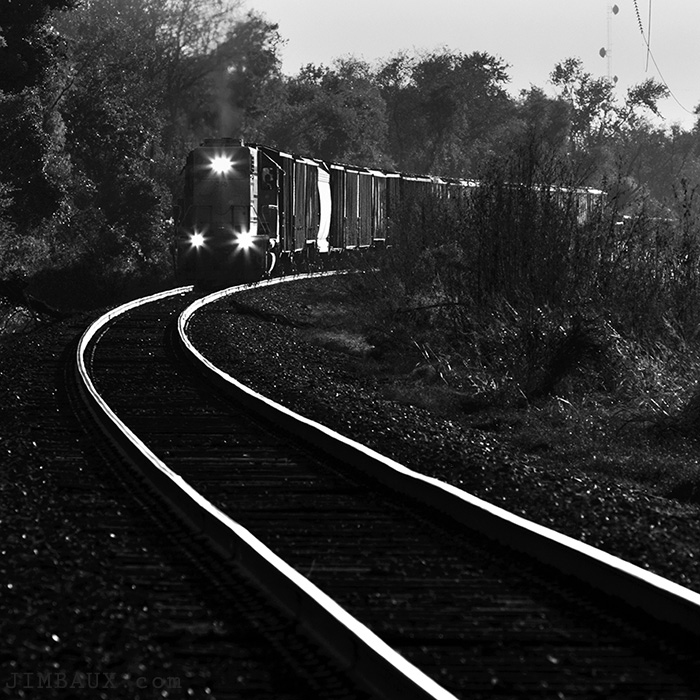

{ 2 comments… read them below or add one }
James, I always enjoy your posts. You are eleqoquent and a provacative thinker. You bring a railroaders
perspictive to simple operations. And a good photographer too!
Regarding auto acceceration; current production is totally out of hand. A Jeep Grand Cherekoee with
a Hemi accecerates to 60 in four+ seconds and a top speed of 160mph. I would not want to be in any
car at that speed. The recent wreck in Arlington at 100 mph shows the devestation caused by on
totally out of hand control.
Diesels can support rapid acceraltion and break in twos esp. with long heavy loads.
I also saw a recent pic of stringing empty coal cars; pulling them off curved track.
I hope engineers are trained better than car drivers. Perhaps simulatior for new drivers would help.
Our hope is edcuation, enforcement, and engineering (hwys have not kept up with cars).
Keep up the good work, Jim Shepherd in Bedford (Ft. Worth) and good hunting.
Nice post. I enjoyed the pictures – even with heat waves.
{ 2 trackbacks }